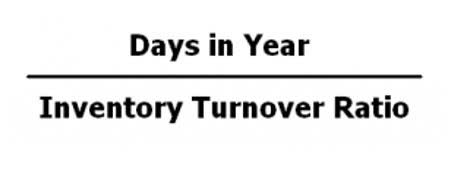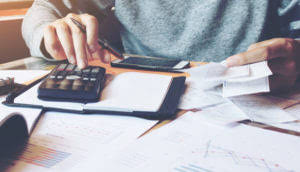Content
- 2 Calculate and compare depreciation expense using straight-line, reducing-balance and units-of-activity methods.
- Limitations of Activity method:
- Everything You Need To Master Financial Modeling
- Straight Line Depreciation Formula
- What Is the Unit of Production Method & Formula for Depreciation?
- Units of production depreciation
- Units-of-activity method:

One way to calculate depreciation is to spread the cost of an asset evenly over its useful life; this is called straight line depreciation. This calculator shows how much an asset will depreciate each year—the yearly depreciation rate—using straight line depreciation. Reducing-balance considers time by determining the percentage of depreciation expense that would exist under straight-line https://www.bookstime.com/ depreciation. It takes into consideration the ‘running time’ of the asset for calculating the depreciation. Under this method the depreciation is calculated by dividing the net total cost of the asset by its estimated service life. For example, in the case of car the service life is the effective running mileage or in the case of Aircraft it is the effective flying hours.
How do you calculate activity-based depreciation?
- Depreciable Base = Asset Cost – Salvage Value.
- Depreciation per Unit = Depreciable Base / Useful Units.
- Depreciation for Period = Number of Units Used in a Period Depreciation per Unit.
A company may also choose to go with this method if it offers them tax or cash flow advantages. Under activity method, the depreciation expense is calculated on the basis of asset’s actual operational activity such as the number of units produced or the number of hours the asset has used during the period. In other words, this method focuses on the real use of the asset in production process rather than just the passage of time.
2 Calculate and compare depreciation expense using straight-line, reducing-balance and units-of-activity methods.
If a manufacturing company were to purchase $100k of PP&E with a useful life estimation of 5 years, then the depreciation expense would be $20k each year under straight-line depreciation. Depreciation is an expense that reduces the value of a fixed asset (PP&E) based on a useful life and salvage value assumption. In this example, let us calculate the depreciation for an asset using all four depreciation formulas. In this method, we assign the item’s total loss of value over the time that we use it. This method gives more loss in the beginning and less loss later on, making it go down gradually.
The reducing-balance depreciation method is the most complex of the three methods because it accounts for both time and usage and takes more expense in the first few years of the asset’s life. It is an accelerated method that results in more depreciation expense in the early years of an asset’s life and less depreciation expense in the later years. The modified accelerated cost recovery system (MACRS) is a standard way to depreciate assets for tax purposes. The activity depreciation method is a cost accounting technique that changes the cost behavior with the fluctuating output.
Limitations of Activity method:
It ends when the cost of the unit is fully recovered or the unit has produced all units within its estimated production capacity, whichever comes first. The units of activity method of depreciation is also referred to as the units-of-production method. For some industries like manufacturing or transportation, the fluctuating levels of output incur different costs. Many industries such as real estate do not incur changing output levels over time. Hence the activity-based depreciation method cannot be uniformly applied across all industries. As in activity-based costing, the Activity depreciation method changes the cost behavior with the fluctuating output.
Under the units of production method, the amount of depreciation charged to expense varies in direct proportion to the amount of asset usage. Thus, a business may charge more depreciation in periods when there is more asset usage, and less depreciation in periods when there is less usage. It is the most accurate method for charging depreciation, since this method is linked to the actual wear and tear on assets.
Everything You Need To Master Financial Modeling
For example, if you have a gas cylinder that can make a total of 10,000 cups of tea. We can find out how much value the cylinder loses after producing each new cup of tea. Your car loses value as you drive it more due to factors like it gets scratches/dents, it loses demand, etc.

This value estimates what the company can anticipate receiving from the sale. Companies have various options when it comes to calculating depreciation. They can choose from https://www.bookstime.com/articles/units-of-production-method a range of formulas specifically designed for this purpose. Straight-line depreciation is a very common, and the simplest, method of calculating depreciation expense.
Straight Line Depreciation Formula
Therefore, a change in estimate does not alter the financial statements for prior periods. First, there is more depreciation expense in the early years and less in the later years. Second, over an asset’s life, an entity cannot record more total depreciation than the asset’s depreciable cost. Notice that in the 5th year, the remaining carrying amount of $15606 was not multiplied by 30%. Lastly, the depreciation rate is applied to the carrying amount of the asset.

The sum-of-the-years-digits method is one of the accelerated depreciation methods. A higher expense is incurred in the early years and a lower expense in the latter years of the asset’s useful life. The annual depreciation charge is calculated by applying this rate to the number of units produced during an accounting period.
There are various depreciation methodologies, but the most common type is called “straight-line” depreciation. Annual depreciation is equal to the cost of the asset, minus the salvage value, divided by the useful life of the asset. Note how the book value of the machine at the end of year 5 is the same as the salvage value. Over the useful life of an asset, the value of an asset should depreciate to its salvage value. Consider the following example to more easily understand the concept of the sum-of-the-years-digits depreciation method.
In the sum-of-the-years digits depreciation method, the remaining life of an asset is divided by the sum of the years and then multiplied by the depreciating base to determine the depreciation expense. Consider a machine that costs $25,000, with an estimated total unit production of 100 million and a $0 salvage value. During the first quarter of activity, the machine produced 4 million units.
Quick Depreciation Calculation Example
For tax purposes in Australia, reducing-balance at twice the straight-line rate is often used and referred to as the ‘double declining balance’ method. It is important to note that just because a business uses one method for taxation does not mean it has to use that method in its financial statements. The units-of-production depreciation method assigns an equal amount of depreciation to each unit of product manufactured or service rendered by an asset. Since this method of depreciation is based on physical output, firms apply it in situations where usage rather than obsolescence leads to the demise of the asset.
What is the activity method?
activity method in British English
(ækˈtɪvɪtɪ ˈmɛθəd ) noun. a type of teaching in which students acquire knowledge and understanding by participating in a set of specially designed activities, rather than by passively listening to a teacher.
